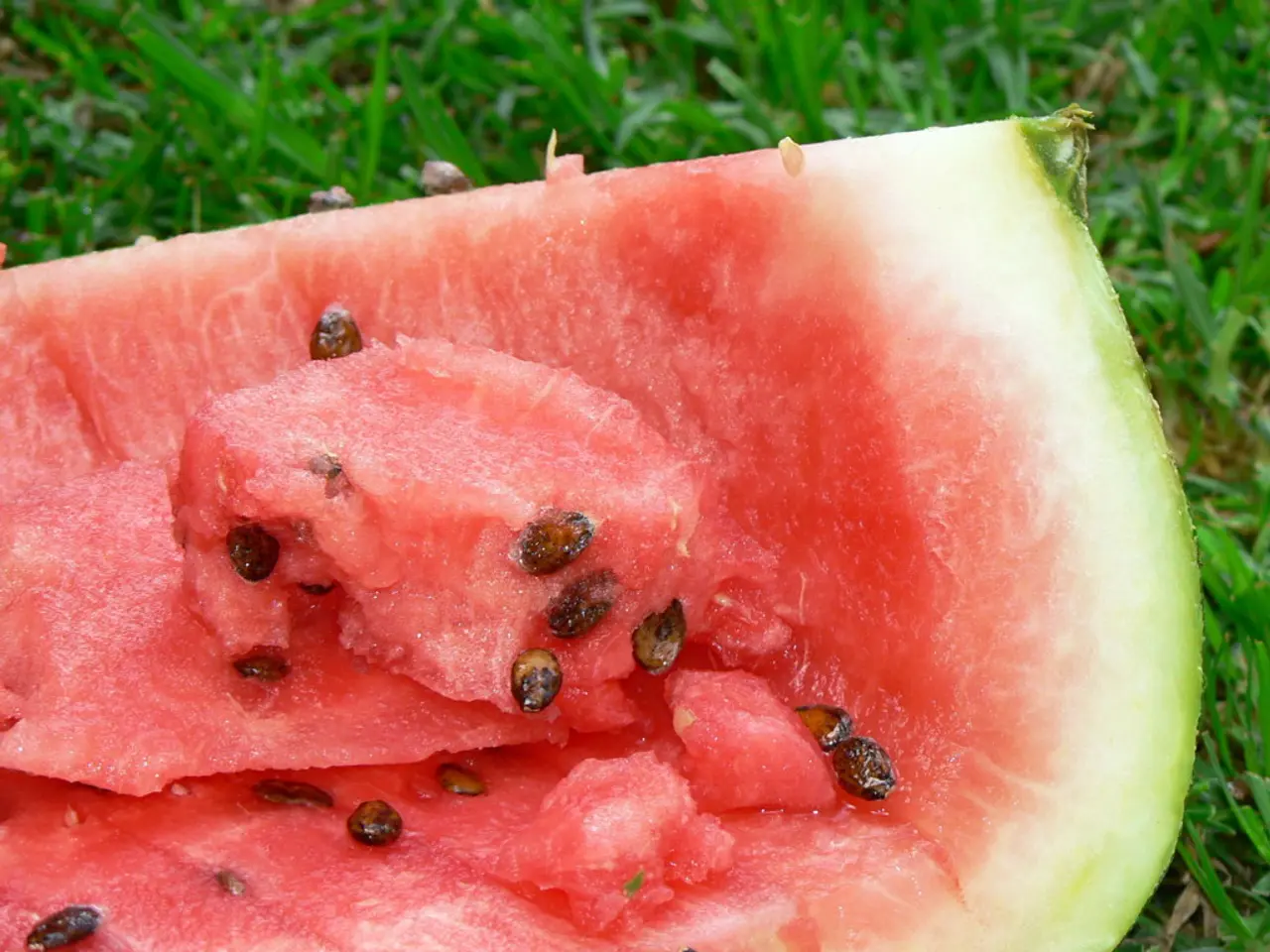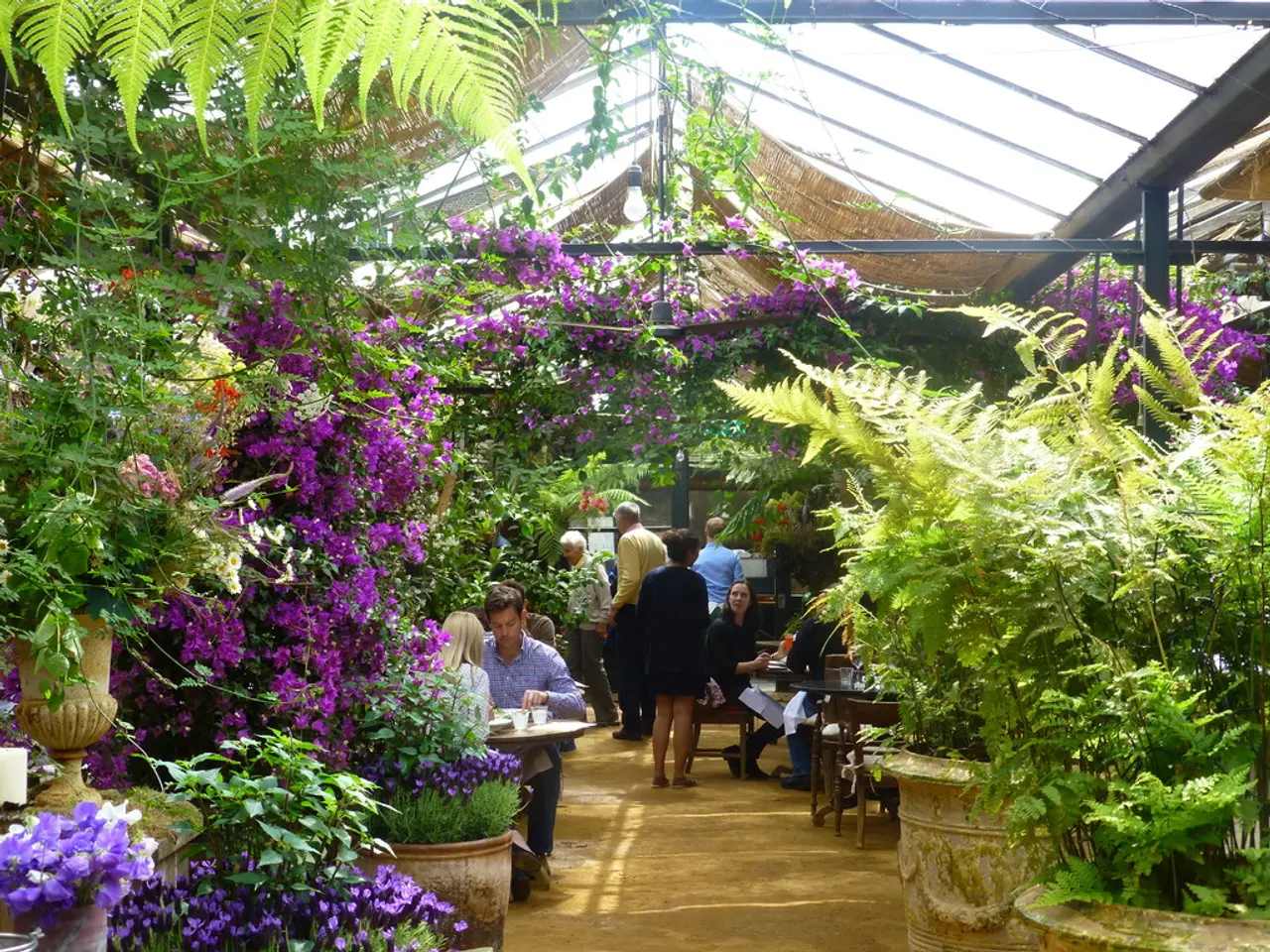Guidelines for Cultivating Watermelons: Savor Juicy Fruit through the Entire Summer Season
Growing watermelons can be a rewarding experience for gardeners, offering a delicious and refreshing treat in the summer months. Here's a comprehensive guide to help you grow watermelons successfully in various climates and soil types.
## Climate Considerations
Watermelons thrive in warm temperatures. The ideal germination temperature is between 26°C and 33°C, with night temperatures not lower than 25°C. For growth, daytime temperatures should be between 25°C and 31°C, and nighttime temperatures between 18°C and 21°C[1][3]. In most regions, watermelon seed planting should occur when the danger of frost has passed and soil temperatures consistently stay above 21°C (70°F)[4].
## Soil Conditions
Watermelons prefer a slightly acidic to neutral soil pH, ranging from 6.0 to 7.5[3]. Consistent, deep watering is crucial. The soil should be evenly moist but not soggy, as this can lead to root rot[2]. Raised beds with good drainage and warm soil temperatures are ideal for watermelon cultivation[2].
## Growing Practices
### Planting
Directly sow seeds about 1/4 inch deep in mounds or hills, with rows about 5 feet apart. Space plants about 2 to 3 feet apart[3]. Adding compost or aged manure to the soil can improve fertility and drainage[1].
### Care
Ensure that your watermelon plants receive at least 8 hours of sunlight per day, with 12 hours being optimal[5]. Water deeply and consistently, especially during flowering and fruiting stages[2]. Regularly inspect for pests like aphids and squash bugs. Use organic methods such as neem oil, insecticidal soap, or hand-picking pests[2]. Plant marigolds, nasturtiums, or basil to naturally repel pests and attract pollinators[2].
### Pruning and Support
While watermelon vines are sprawling, they typically do not need additional support. However, ensure that the vines are not overly shaded by other plants[5].
## Special Considerations by Climate
In cooler climates, use row covers to warm the soil and extend the growing season. In hot and dry climates, mulch around the plants to retain moisture and reduce soil temperature fluctuations. In rainy climates, improve soil drainage to prevent waterlogging, which can lead to root rot.
By following these guidelines, you can successfully grow watermelons in a variety of climates and soil types. The botanical name of watermelon is Citrullus lanatus. There are many different varieties of watermelon seeds available, such as Mardi Gras, Royal Majesty, AU-Producer, Sugar Baby, Yellow Baby, and Golden Crown. Watermelon seeds can be started indoors a month or so before the last spring frost, or planted outside in hills about 6 feet apart with 9 feet between rows.
[1] University of California Agriculture and Natural Resources. (2021). Watermelon. Retrieved from [2] Cornell University Cooperative Extension. (n.d.). Watermelon Growing Guide. Retrieved from [3] North Carolina State University. (2021). Watermelon. Retrieved from [4] University of Illinois Extension. (2021). Watermelon. Retrieved from
Maintaining a home-and-garden lifestyle, specifically involving gardening, can lead to a rewarding experience in growing watermelons. By selecting the right varieties like Mardi Gras, Royal Majesty, or Sugar Baby, you can cultivate these fruits in climate-appropriate conditions, whether that be cooler regions with row covers or drier areas with mulch for moisture retention.




